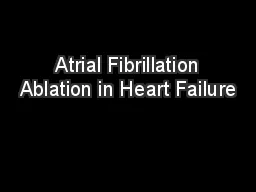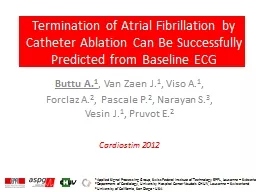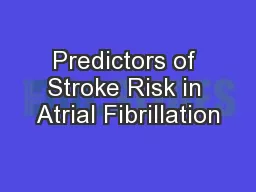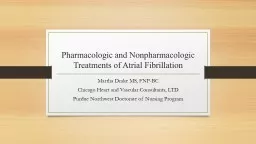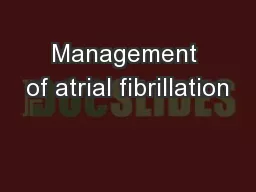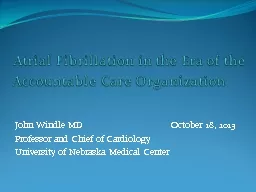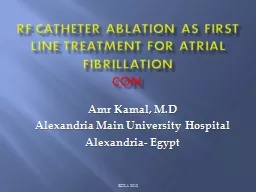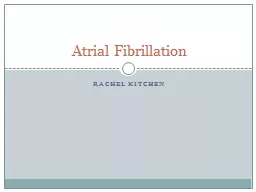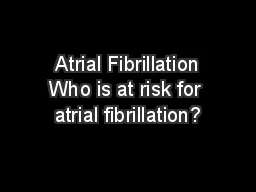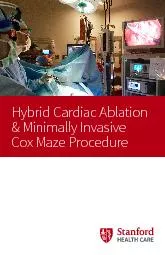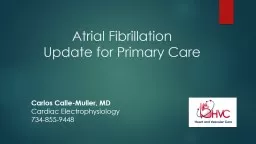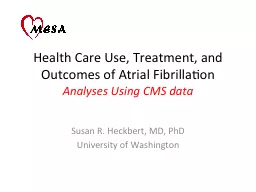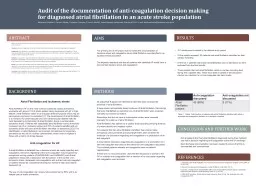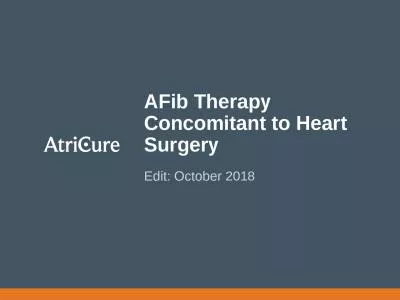PPT-Atrial Fibrillation Ablation in Heart Failure
Author : danika-pritchard | Published Date : 2020-04-03
Avishag LaishFarkash MD PhD Director EP and Pacing Unit Assuta Ashdod University MC BenGurion University of the Negev AF and HF the related twin epidemics of CVD
Presentation Embed Code
Download Presentation
Download Presentation The PPT/PDF document " Atrial Fibrillation Ablation in Heart F..." is the property of its rightful owner. Permission is granted to download and print the materials on this website for personal, non-commercial use only, and to display it on your personal computer provided you do not modify the materials and that you retain all copyright notices contained in the materials. By downloading content from our website, you accept the terms of this agreement.
Atrial Fibrillation Ablation in Heart Failure: Transcript
Download Rules Of Document
" Atrial Fibrillation Ablation in Heart Failure"The content belongs to its owner. You may download and print it for personal use, without modification, and keep all copyright notices. By downloading, you agree to these terms.
Related Documents

